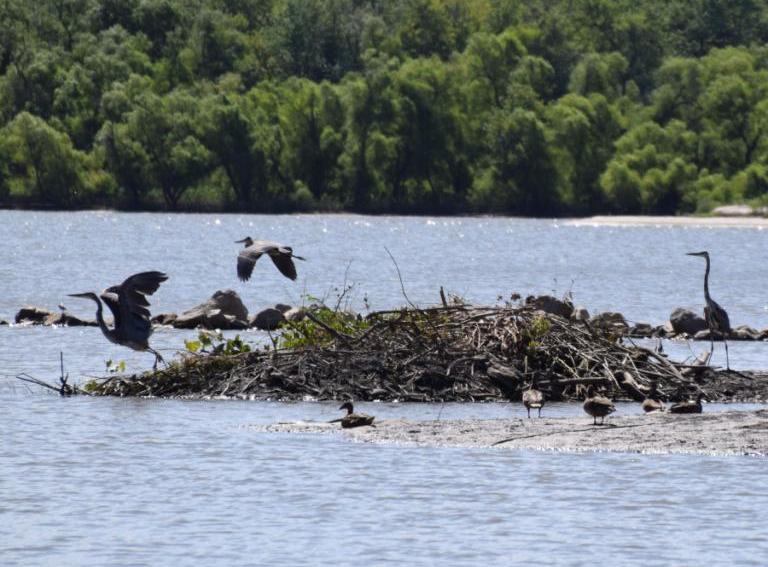 The Navigation and Ecosystem Sustainability Program (NESP) is critical to the long-term sustainability of the Upper Mississippi River – Illinois Waterway (UMR-IWW) ecosystem and navigation system.
The Navigation and Ecosystem Sustainability Program (NESP) is critical to the long-term sustainability of the Upper Mississippi River – Illinois Waterway (UMR-IWW) ecosystem and navigation system.
The UMR-IWW ecosystem consists of 2.7 million acres of bottomland forest, islands, backwaters, side channels and wetlands, all of which support more than 300 bird species, 57 mammal species, 45 amphibian and reptile species, 150 fish species, and nearly 50 mussel species. More than 40 percent of North America’s migratory waterfowl and shorebirds depend on the food resources and other life requisites (e.g., shelter, nesting habitats, etc.) that the system provides. These Trust Species and the threatened and endangered species in the region are the focus of considerable federal wildlife management activities. In the middle and southern portions of the basin, the habitat provided by these rivers represents the most important and abundant habitat in the region for many species.
The diversity and abundance of native aquatic plants and animals are seriously threatened by degradation, loss of habitat and the arrival of several exotic species. Ecosystem restoration endeavors have had positive localized influence on species diversity, abundance and their ability to cope with new exotic invaders. The adaptive systemic approach authorized for this program would address these issues in a manner and on a scale necessary to ensure long-term ecological health and sustainability.
The 85+ year-old navigation system continues to experience some of the longest lockage delays in the country due to single, undersized 600’ lock chambers (most tows are 1,200 feet in length), and downtime for repair of aged gates and machinery. The existing locks and dams were constructed in the 1930s and 1940s with 600-foot locks. Current lock delays average 4-5 hours. Lack of funding for lock and dam rehabilitation and major maintenance activities in recent years has increased the risk of component failures and lock closures.
The June 2012 Institute for Water Resources report on U.S. Port and Inland Waterway Modernization found that the Upper Mississippi River - Illinois Waterway (UMR-IWW) navigation system has adequate capacity through 2020, but will require maintenance of existing capacity. Although the UMR-IWW tonnage has decreased over the last decade, this trend is expected to reverse due to increased demand for grain exports and enlargement of the Panama Canal. A long-term strategy is essential for maintaining reliable and cost effective inland navigation. Inland navigation is estimated to save $23.74 per ton compared to overland transportation (Planning Center for Expertise for Inland Navigation, 31 January 2012). The estimated savings for the Upper Mississippi River and Illinois Waterway based on 2010 tonnage values would be $1.44 billion and $0.86 billion, respectively.
The UMR-IWW system is recognized worldwide as a destination for boating, camping, hunting, fishing and numerous other recreational opportunities. There are more than 580 manufacturing facilities, terminals, grain elevators, and docks that ship and receive tonnage in the Upper Mississippi River basin. Additionally, there are hundreds of small and large businesses, water treatment and hydropower facilities, and nuclear plants that depend on the river system for their operational needs.